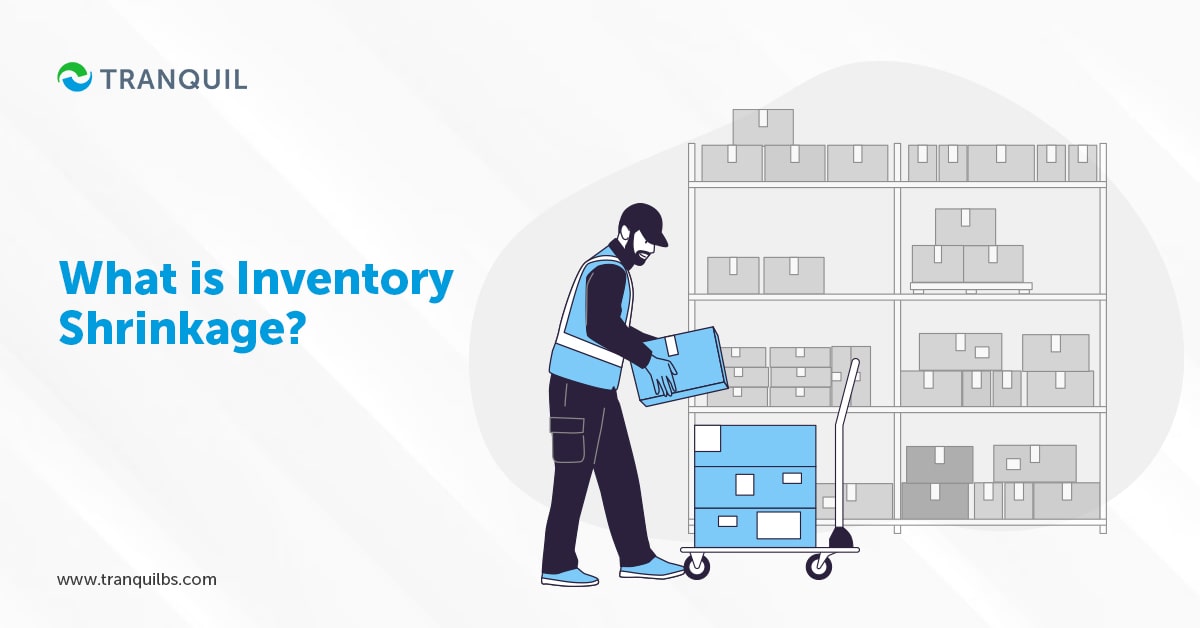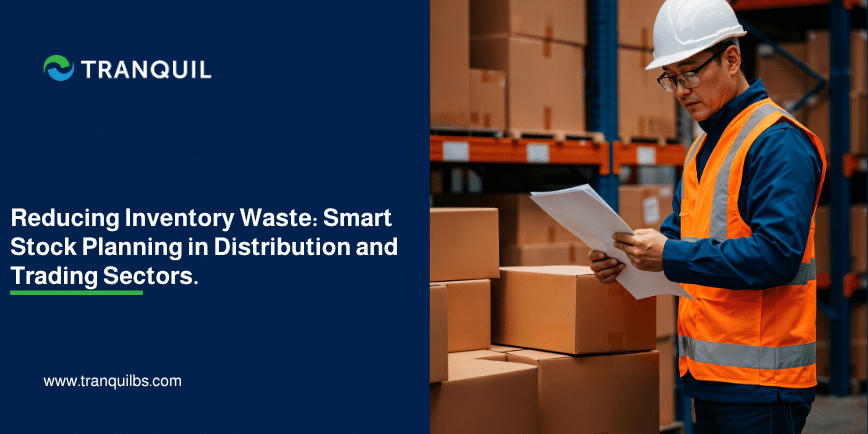
Things to Know about Inventory Shrinkage
Inventory is a critical asset for any business that deals in products, and they invest a good part of their working capital in producing or procuring inventory.
For this reason, it is very important that they manage inventory meticulously.
However, almost all companies face inventory shrinkage of some type and at some point.
Let us see what it is, how it’s caused, and how it can be minimized if not prevented.
What is Inventory Shrinkage?
Inventory shrinkage is simply the difference between the inventory purchased or produced as per your books (based on receipts and purchase orders or production records), and the inventory physically available on hand.
Inventory lost thus is money and profit lost, and even potential income.
It is therefore essential that you pay attention to this problem and take measures to curb it.
Calculating Inventory Shrinkage

This is essential, and it requires you to take a physical count of every item that you have in your warehouse, or store shelf.
Once you have counted this, simply subtract it from the inventory level as recorded in your books.
You can either calculate this by number, or by its value.
The method is the same; you calculate the value of the inventory on hand, and subtract it from the book value, to get the inventory shrinkage.
The formula is:
Inventory Shrink= Inventory count or monetary value as per books – count or value of physical stock available.
Similarly, you can calculate the inventory shrink rate.
The formula is:
Inventory Shrink in number or value / Inventory procured or produced in count or value.
The ideal shrinkage rate varies from business to business and industry to industry, However, businesses should have a maximum inventory shrink rate of 1 to 2 percent; of course, anything lower is even better.
ALSO READ: Must-Have Inventory Management Software Features
Importance of Calculating Inventory Shrinkage
It is an uncomfortable topic, but something that should not be ignored at all.
Inventory shrink directly affects your profitability; you must measure and track inventory shrink over time to understand how exactly it impacts your business.
Further, measuring inventory shrinkage will help you to diminish it in the future; accurately calculating inventory shrink can inform you about its cause.
Let’s say the inventory shrink rate in your business has always been low, and there is a sudden spike.
It is highly likely that there is just a miscalculation somewhere, and you can go through your records.
If it is consistently high however, you must take a serious look at the possibility of theft and fraud.
ALSO READ: Common Inventory Management Problems and Solutions
If Inventory Shrinkage is Ignored
It is imperative that you account for the shrink if you’re serious about growing your business.
Without this, you can not only lose profits, but also run the risk of wrong representations of the value in your books of accounts, and spiking your COGS.
This is what can happen:
- The most obvious result is that you lose products irretrievably, and will never know where they are
- The loss of money, income and profit is naturally undesirable, and will hamper hiring and expense management
- In the event of a mismatch between sales records and inventory reports, you may have to spend a great deal of time performing reconciliation between accounting records and receipts. When there are multiple errors, you can expect a visit from the Tax authorities.
Accounts Impacted by Inventory Shrinkage
It is necessary that you note down losses caused by inventory shrink, but first you must understand them, so that you can sync them with their value.
By analyzing the magnitude of the loss, you will be able to record in the correct books of account.
Small losses can be simply debited in the COGS account; however, a large loss has to be shown in a new account specially created for the purpose.
By debiting the loss in this account, you can manage your gross profit effectively, without including the mass loss.
To reflect the loss in your books you must show an increase in the shrinkage account and reduce the inventory account.
ALSO READ: What is Backordering?
Reasons for Inventory Shrinkage

Let’s look at what causes the shrink and understand those reasons before you start taking measures to resolve it.
Here are the most common reasons:
1. Theft
This is the biggest cause of inventory shrinkage.
Large businesses can take measures that allow them to hold a person accountable for the shrinkage when it happens; but it may not be possible for a small business.
Theft is done by either employees or customers.
Employees have the most opportunities, as they are constantly in close proximity to inventory, know the security measures and location of CCTV cameras, and can easily work around them.
While it is difficult to prevent this, it’s not impossible.
Customers in physical stores are likely to shoplift small items as they can be easily swiped off shelves and dropped into handbags.
ALSO READ: Step by Step Guide to Order to Cash Process
2. Administrative Errors
These refer to incorrect data entry, erroneous recording of sales, wrongly counting the cash and so on, which can cause the wrong value of products recorded in the books.
3. Damage
Goods often get damaged in transportation of when they are stored.
This could be caused by improper handling which causes cracks and breaks, damage due to water, and so on.
Products that are so damaged cannot be sold, and this becomes inventory shrinkage, and a loss for the company.
4. Perishable Inventory
In addition to damaged products, you will also have to discard products that have perished.
These include food items, medicines, cosmetics, dairy products, produce, and any other perishable items.
Certain products cannot be sold beyond the printed expiry date, and it becomes obsolete of waste, and has to be thrown away, and becomes inventory shrinkage.
ALSO READ: What is Order Up to Level in Inventory Management?
5. Vendor Fraud
Unscrupulous vendors may over-invoice and under-deliver; that is, they ship and deliver fewer items than what is mentioned on the invoice.
Of course, there could be other reasons, but these are the most common ones.
Some are unavoidable, but by being meticulous, you can definitely attempt to reduce and minimize inventory shrinkage.
Methods of Inventory Shrinkage Reduction

Inventory shrinkage can be addressed by implementing the right actions.
Here are some of the most effective methods you can use:
1. Meticulous Recruitment
Nearly half of inventory shrink takes place because employees steal.
To deal with this, you can appoint one person to be responsible for the inventory.
Make sure this person is thoroughly vetted and evaluated on moral grounds in addition to their expertise; they should be given rigorous training as well.
Now if shrinkage happens (that’s not due to damage and perishing) this employee will be held accountable.
ALSO READ: Debit Note vs Credit Note
2. Educating Workers
Most workers are unaware of inventory shrinkage and how it impacts them; it is important to make them realize the consequences – how it can impact their paychecks, set back their progress for promotions, and so on.
3. Strict Security Checks
Security is absolutely essential for inventory.
Ensure there are adequate CCTV cameras in your warehouses and retail outlets, and anywhere else you have inventory stored or displayed.
Using transparent trash bags will prevent employees from using them to steal products by pretending to take out garbage.
Use tracking devices and security tags, especially for valuable items – or keep them under lock and key.
Install anti-theft alarms, and also have a guard to manually check people at the exit – these measures will act as deterrents for sure.
ALSO READ: What is Goods Received Note (GRN)?
4. Work with a 3PLs
3PLs are third-party logistics providers who function as fulfilment agents; they pack and ship your orders so that you don’t have to.
They take all precautions to ensure that your inventory is secure at all times.
3PLs provide a valuable service to ecommerce entrepreneurs, as fulfillment can be cumbersome and unproductive for them to perform themselves.
Reports provided by them help you to minimize inventory shrinkage at your end.
5. SKU and Barcodes
These methods are used to assign a unique identity to every product, making it easy to track product liquidity, and to check which products are selling quickly or slowly.
6. Split Responsibilities
This is an excellent way to ensure your inventory is safe; assign responsibilities to multiple employees for each phase.
For example, in your retail store, once the salesperson has concluded a sale, they get it billed by another employee who generated invoices in duplicate or triplicate, and the cash is collected by a third employee.
Assign different employees to prepare reports, check the inventory, study them, and compare them.
ALSO READ: What are the Benefits of e-invoicing for your Business?
7. Watch for Fraudulent Sales

This could be in the form of employees:
- Invoicing a larger quantity of goods sold and pocketing the extra quantity
- Setting up fraudulent customer accounts, and shipping products to those addresses with bills remaining unpaid
- Setting up fraudulent vendor accounts and paying for goods that are not actually bought, with the money going to the employee
- Redeeming fake coupons at physical stores on a big scale
- Colluding with vendors and taking kickbacks from them to defraud you
While this may sound overwhelming, it’s not too hard to prevent once you become aware of such things that can happen potentially.
One way to deal with this is preventing any one person from dealing with big orders.
Assign different employees for each step and make it more transparent.
ALSO READ: Different Ways to Improve Procurement Process
8. Prevent Fraudulent Shipping
It’s more difficult to catch fraudulent acts in warehouses as they are huge and busy, with inventory entering and leaving all day long.
Here it is vital you check the goods received notes for items tagged as faulty.
Make sure they actually exist, and they are really damaged.
Assign a different employee to check this, and a different one for shipping. without this, there will be a conflict of interest and chance for committing fraud.
9. Rotate Products
Products that become obsolete fast must be rotated; with a robust inventory tracking system, you can get timely notifications when products approach the end of their shelf life.
It also helps you identify fast selling and slow-moving items, and you can alter your sales strategies.
ALSO READ: What is an Inventory Control System?
10. Better Receiving and Stocking Processes
By implementing better processes for receiving goods and stocking them, you can minimize or prevent damages to new products.
Train employees on proper and careful handling in warehouses and backrooms.
Product placement should be done thoughtfully; for example, make sure the big and heavy items are on lower shelves, and so on.
Schedule inspections of your storage spaces including roofs, ceilings etc. so that the elements cannot damage your inventory.
Install fire alarm and prevention systems everywhere your products are stored.
11. Regular Inventory Level Checks and Audits

It is important to carry out inventory audits by an independent supervisor.
This will act as a deterrent for employees, and they will be less inclined to steal or commit fraud.
Genuine mistakes if any can also be detected quickly and rectified.
Detailed inventory record-keeping goes a long way in ensuring its security.
Physically counting inventory regularly will also help substantially to reduce shrinkage.
ALSO READ: Procurement vs Purchasing
12. Automated Inventory Management
This is one of the best methods to minimize inventory shrink.
Tranquil ERP has a robust inventory management module that will help automate and streamline your inventory management, and reduce manual dependence and errors, speed up processes, and give better insights.
Inventory shrinkage must be dealt with quickly and effectively, and Tranquil can help you. Schedule a FREE demo to know how.



